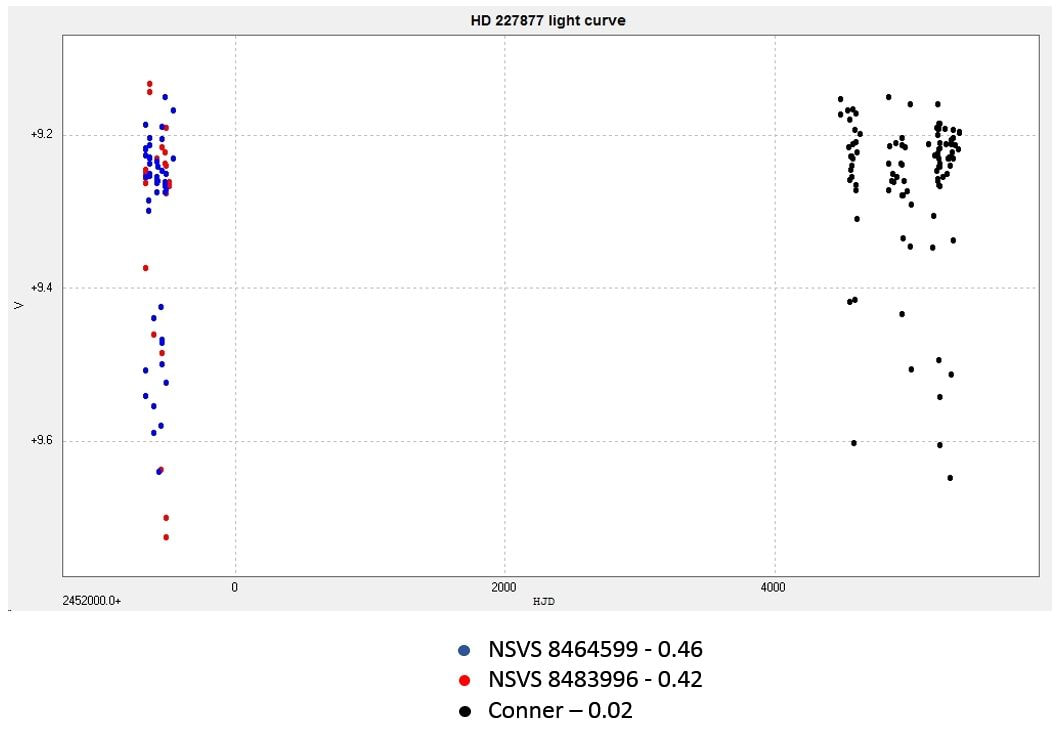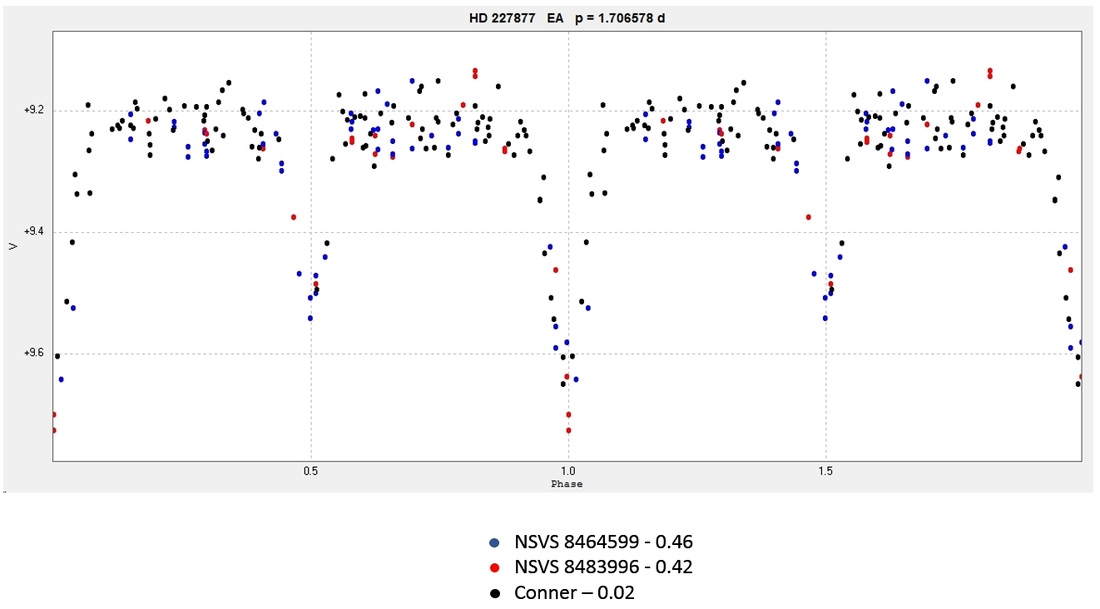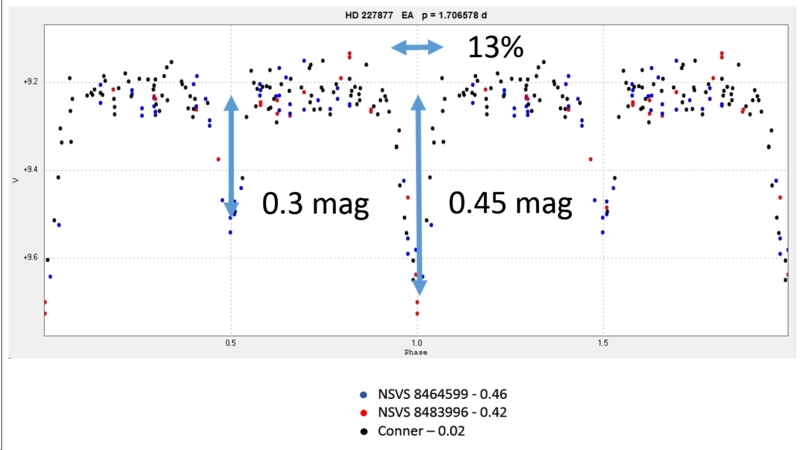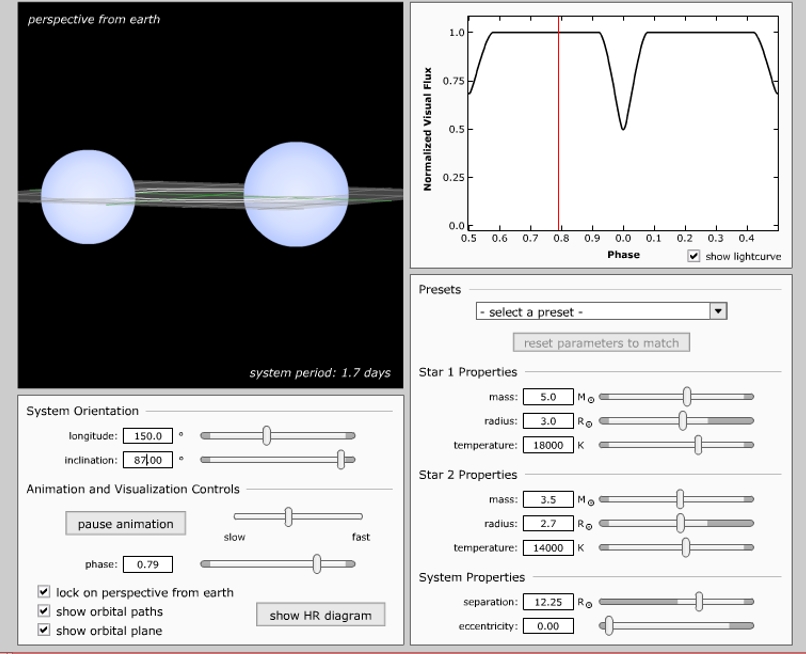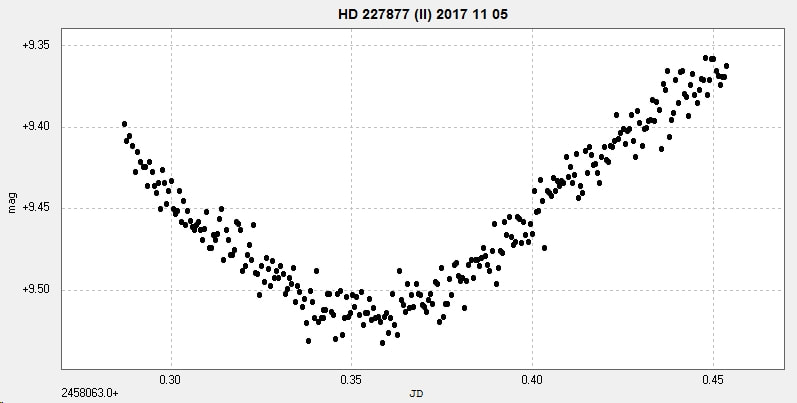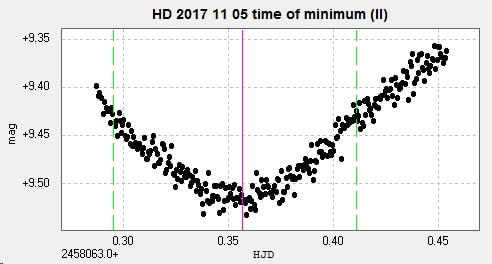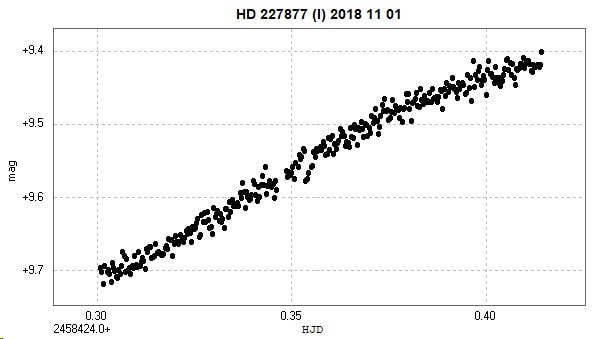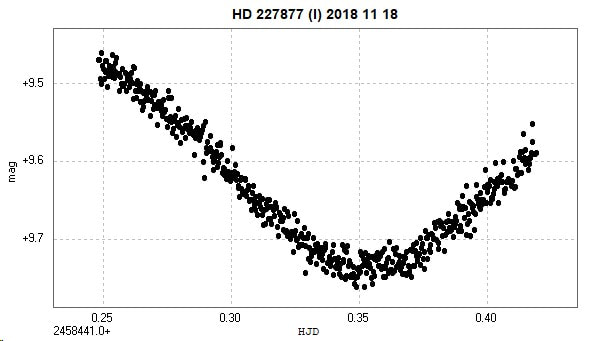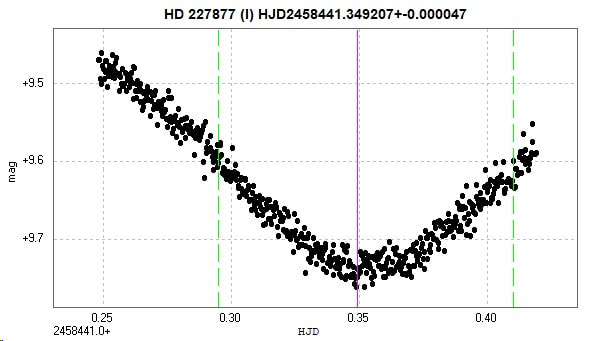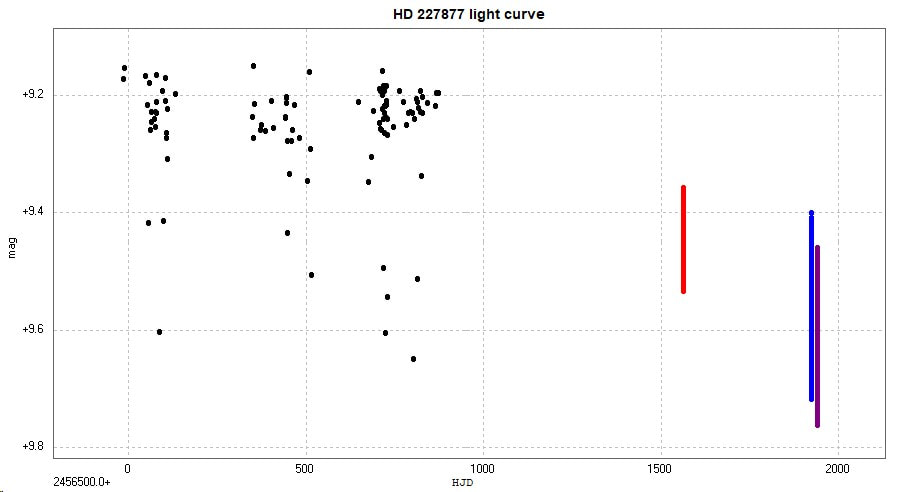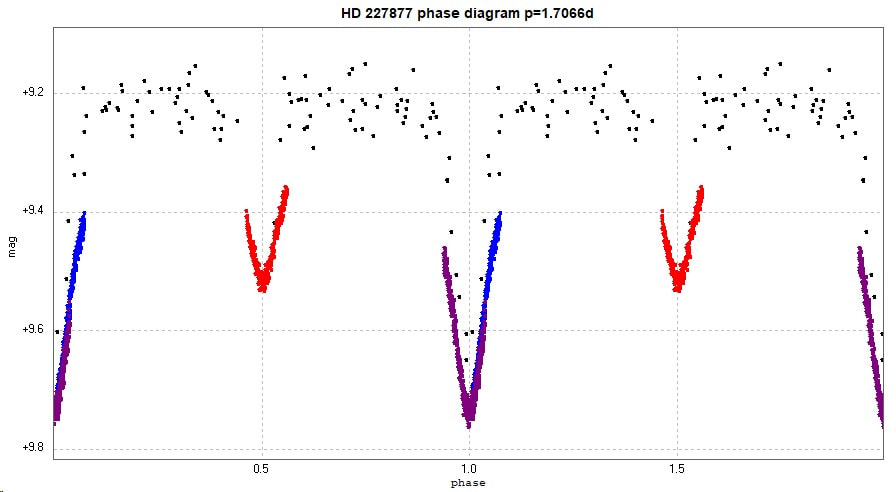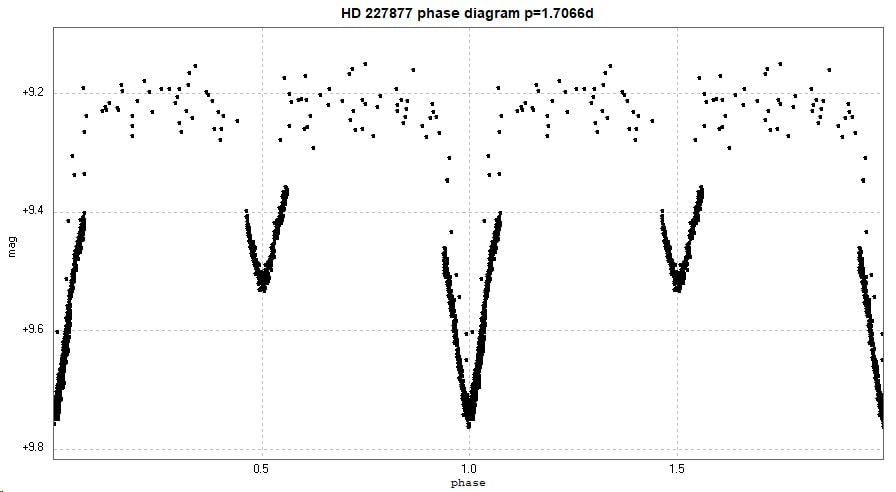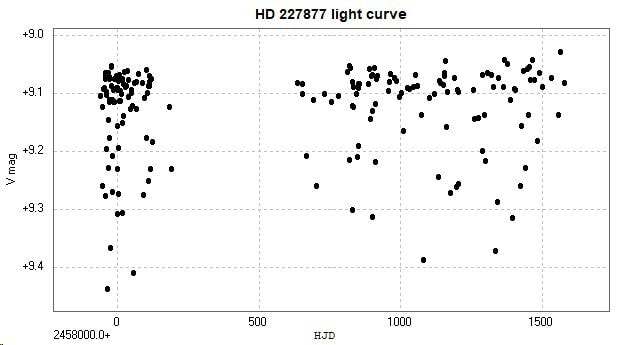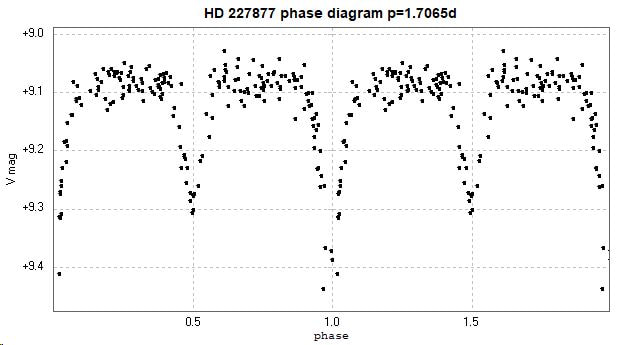HD 227877 2022 Feb 14 update - this star has now been entered into the GCVS as V2896 Cyg
An eclipsing binary in Cygnus, my 17th variable star discovery and second eclipsing binary discovery, confirmed on 2016 February 26. AAVSO VSX entry here, GCVS entry here.
Photometry from 100 unfiltered images taken with the Bradford Robotic Telescope's Cluster Camera (BRT) 2013 July 13 to 2015 December 16.
(HD 227877 is in the field of my object star V448 Cyg.)
Obtaining this light curve was challenging as the star is close to another bright star (6 arcsecs away) that contaminated the measurements. These were corrected by the technique of 'deblending', where the estimates are corrected by removing the contribution of the nearby star.
Results from NSVS (Northern Sky Variability Survey (NSVS) (Wozniak+, 2004)) have also been included.
Photometry from 100 unfiltered images taken with the Bradford Robotic Telescope's Cluster Camera (BRT) 2013 July 13 to 2015 December 16.
(HD 227877 is in the field of my object star V448 Cyg.)
Obtaining this light curve was challenging as the star is close to another bright star (6 arcsecs away) that contaminated the measurements. These were corrected by the technique of 'deblending', where the estimates are corrected by removing the contribution of the nearby star.
Results from NSVS (Northern Sky Variability Survey (NSVS) (Wozniak+, 2004)) have also been included.
This is an attempt at modelling the system using the Phoebe modelling package.
I used the star Alkaid as a starting point because it has a similar spectrum (B3V) to the new star. This gives a starting point of 6.1 solar masses, 3.4 solar radii, 1 350 times the solar luminosity and a surface temperature of 16 800 K. Also 0.3 mag = 32% difference in luminosity and 0.45 mag = 51% difference in luminosity. The various parameters were then adjusted until the derived light curve matched the observed light curve. How good a model this is remains to be determined!
Secondary minimum observed from Somerby Observatory with the 2" Titan on 2017 November 5. The images were unfiltered.
The rise from primary minimum was observed from Somerby Observatory with the 2" Titan on 2018 November 1. The images were unfiltered. (The sky wasn't dark enough to obtain the actual minimum. It is hoped to observe this in the future.)
A primary minimum was observed from Somerby Observatory with the 2" Titan on 2018 November 18. The images were unfiltered.
The corresponding time of minimum was calculated to be HJD2458441.349207+-0.000047.
The above BRT data (in black), together with the secondary minimum (in red) and 2 primary minima (in blue and purple) observed from Somerby Observatory, result in the following light curve and phase diagram.
Below are a light curve and phase diagram constructed from photometry of 193 images taken with the Open University COAST telescope between 2017 July 6 and 2021 December 31 using a V filter. (This was a C14 prior to 2021 July 9 and a CDK17 subsequent to this. The increased aperture restricted exposures to only 5s, which is too short to reduce the effects of scintillation to 'good' levels.) The contribution of the nearby star has not been removed by deblending in these diagrams. It is hoped at some stage to obtain more results from this telescope in order to obtain a 'definitive' light curve to help model this system but, at the time of writing, the taking of images is severely hampered by poor weather at the site.
[ Page updated 2022 February 8 ]

